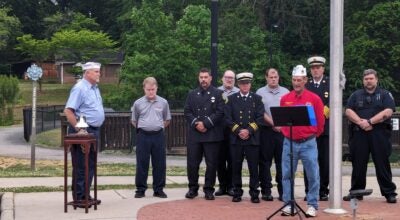Forgotten battles: The Battle of Luzon
Published 12:00 am Monday, May 26, 2014
The Battle of Luzon was a bloody battle on land located in part of the Pacific Theater of Operations of World War II. The U.S. was aided by the Philippines against the Japanese. It was one of the bloodiest and most costly battles for the Japanese and the U.S. in January 1945.
The Japanese wanted control of the Philippines in an effort to establish bases for a possible attack against the United States. The Japanese had taken control from the Americans in October 1941 but later General MacArthur believed he must retake Luzon, the largest island in the Philippines. Smaller islands surrounding Luzon were captured by the U.S. in an effort to establish a base camp to prepare for the attack.
More than 70 Allied warships headed for the islands, including the battleships Pennsylvania and the Colorado, along with 175,000 troops of the 6th Army who arrived during the first landing. Eventually, 10 U.S. divisions and five other regiments would make Luzon the largest campaign of the Pacific war. It involved the U.S. using more troops than in North Africa, Italy and southern France combined.
During the second landing a week later by the 11th Airborne Division and the 1st Cavalry Division, the Japanese blew up all the bridges and installations to slow down the attack.
The battle continued for weeks as more U.S. troops prepared for landing, including the 32nd Infantry Division, which landed 18 days after the previous two divisions. Artillery was a major support of the ground troops and was to include the 120th, 121st, 126th, 127th, 128th and the 129th field artillery battalions.
If the Japanese lost the islands it would be a critical threat to their supply of food and oil, so they decided to make this the major battle of the current operation. Some 430,000 Japanese troops surrounded the islands in hopes to stop the Americans advancement, and 260,000 of those were on Luzon.
Kamikaze attack became the major threat against the Americans, and on Dec. 13 the cruiser Nashville was hit, killing over 130 American soldiers while another 190 lay seriously wounded, including Brig. Gen. William Dunkel, commander of the landing force. Kamikazes then attacked several other ships. The Army destroyed 450 Japanese planes and the Navy destroyed 270 more.
The great battle had begun with devastating casualties and only a few other campaigns had a higher casualty rate.
During the tremendous attack by the U.S. against enemy caves and rough terrain, it was the 3rd Platoon, Company K, 127th Infantry Regiment that was cited by the War Department for outstanding performance of duty in action against the enemy near Santa Maria, Luzon, and Philippine Islands. Nineteen soldiers were ordered to take and hold the hill under heavy fire and they did just that, killing every single enemy they encountered.
Numerous medals of valor were awarded to members of the 32nd Infantry Division, including four medals of honor, three of them posthumously.
The Japanese main force pulled out June 28, 1945, but pockets of their resistance would not give up until several months later. It was a costly battle for the Japanese, as their casualties rose to 230,000. The American forces reported 10,380 killed and 36,550 wounded. There also were 93,400 non-combat casualties that included another 260 deaths and were mostly from disease.
This story and others were not major headline news back home as they were overshadowed by the larger battles, but when this amount of American casualties are reported, I find it necessary to remind Americans of the thousands of families affected by battles like Luzon.
Other battles of the Philippines include the Battle of Bataan, the Battle of Corregidor, the Battle of Leyte Gulf and the Bataan Death March. Our men fought bravely and in horrible conditions, but America did prevail and we should give thanks to those winning the battle.
Rodney Cress is a Vietnam veteran and longtime advocate on veterans issues.




